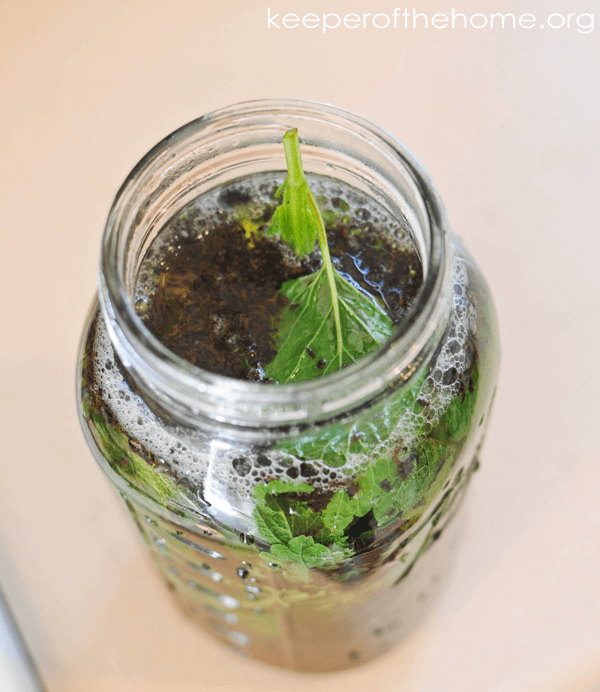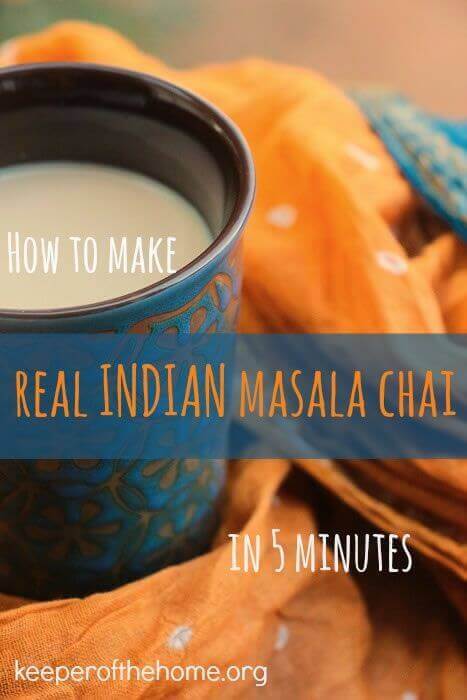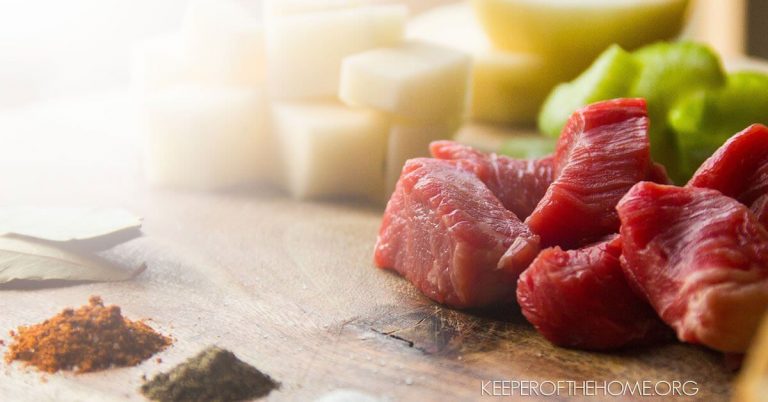Attitude Towards Sugar

Written by Kate Tietje, Contributing Writer
Back when I used to eat SAD (Standard American Diet, for those not familiar), I tried to make the “healthiest” choices wherever I went. So, if we happened to be getting fast food (not a rarity growing up), I would choose grilled chicken and salads over burgers and fries. My mentality was that I wanted to choose the best all the time, or at least most of the time – there was the occasional treat!
Small note: I remember I’d have a couple weeks of “perfect diet” where I’d eat little to no fat and tons of lean meat and veggies, and I’d end up feeling weak and sick. I concluded more than once that my body needed fat, although at the time I had no idea why. Hmm…now I know!
Once I started eating NT, though (which was largely spurred by my daughter’s allergies and other food issues), my perspective shifted a bit. I struggled between wanting to maintain a perfect diet and wanting something easy.
Fellowshipping also played a role: I felt that it was more important to share a meal with friends, even if my choices weren’t perfect. My feelings about food were compounded by both the way I’d eaten growing up and the fact that due to my daughter’s issues that we had to be so strict for a time that when we were finally able to relax, I went a little nuts.
We were dairy-free from July ’09 until March ’10. We were gluten-free from October ’09 until January ’10, when we were completely grain-free until March ’10. We were also free of nuts, seeds, and legumes. We were on GAPS for the first few months of ’10, so we were also completely sugar free. It was a struggle to only be able to eat meat, certain vegetables, and some fruit. I missed my nuts and beans and other “GAPS legal” foods that my daughter could not handle.
So in March ’10, when we got our raw dairy for the first time, and began sprouting grains, a whole new world was opened up for me. I also realized that my family did okay on white flour (since the phytic acid is in the bran and white flour doesn’t contain it), which was nice to know if we were in a pinch (such as out to eat with friends). I had missed all the treats I used to have: bread, cheesecake, cookies, ice cream…. I wanted to sample them all (again)!
Unfortunately this led to the usual unpleasant side effects of sugar: irrational anger, weight gain, headaches, fatigue, stomach aches, etc. My husband began eating candy at work and came home angry and unreasonable. We fought.
Realizing all of this strengthened my resolve to get rid of the sugar in our home again. We now only eat treats at home (except very, very rarely; certainly not a few times a week like before!) and we use only sprouted flour, sucanat, raw honey, raw milk, and other nourishing foods in creating these treats. Raw milk ice cream is a favorite here, and it contains so little sugar that I make it very often (those used to store-bought ice cream say it doesn’t taste sweetened at all, but rather just like ice-milk). This helped; we felt better.
The problem with my attitude, however, remained. I no longer indulged in sweet treats when we were out, but I still would get bread, fried chicken, fries, etc. I figured “it won’t hurt sometimes; we have to eat!” As long as we were eating okay at home, it didn’t matter. But then it started to be that the “treats” were happening a couple times a week. Ideally diet should be good 80 – 90% of the time, and when I was going out multiple times a week I was no longer achieving that ideal.
My attitude had to change.
I realized that every meal is a chance to nourish our bodies. And that in some cases it’s better to not eat than eat junk (for example, if you’re out running errands and tempted to pick up fast food…you’ll be home in an hour, so waiting to eat is better than choosing junk). I decided that I did not want to put junk into my body or my kids’ bodies. I needed to plan better and choose the most nourishing foods as often as possible so that we would always be healthy.
Part of my attitude change was sparked by my realization that I was suffering from mild adrenal fatigue. I was starving and craving butter and salt, I had trouble falling asleep at night, and I was often irritated for no reason. I wasn’t nourishing myself the way that I needed to because I was focusing more on my “need” to have treats than on my need to be healthy.
I made more changes in my family’s diet. When we went out with friends (and we still did), I’d either bring us some food from home, or I would choose a restaurant that had good options (Chipotle, Panera, and Whole Foods are all acceptable). I started adding raw egg yolks to everything, and plenty of extra pastured butter and sea salt too. I started making a homemade “sports drink” to help replenish fluids. I drank more kombucha. I took the time to stop and eat at home when I needed to, instead of skipping meals because I was busy caring for my home and children. I felt so much better! It sealed my resolve that every meal is a chance to nourish and we must make the best choices we can, all the time.
Having that resolve is key. No, your diet will not always be perfect. Yes, there will be times and situations in which fellowshipping or another activity take precedence over making sure your diet is “right.”
But if your attitude is “I am going to make the best of every meal given what I have” then you will have a good diet and you will be healthy. This attitude change has made a world of difference for me (I don’t even really like a lot of those treats anymore!), and I know it would for others as well!







My husband and I were used to just eating whatever we are “in the mood” for, and then working out. Recently, God has been showing us so many things about the food we eat. We have been trying to eat more organic, healthy food. It seems it is hardest to do this both socially as well as when we are busy. It is just so much easier to eat bad, and it tastes so good – not to mention how addictive it is! Anyway, we are trying to work on making better choices for every meal. This post was very encouraging. Sometimes it helps just to have the right perspective!! Thank you! Have a blessed day!
Megan @ A Blossoming Homestead
My family is gradually shifting toward a healthier diet. We used to eat a somewhat healthier version of the SAD – some healthy choices like whole grains, butter instead of margarine, limited fast food, etc. – but I realized that we had a lot of improving to do. So now, we rarely eat out, I cook most meals from scratch or almost scratch, we’ve eliminated HFCS and other GMOs and we’re doing more organics and food preservation. My opinion on any diet is that you must follow your family’s individual needs. For example, no one in my family has any issues with gluten or grain consumption. However, my husband and I both have issues with low blood sugar. So, we avoid meals that heavy on refined flour and sugar and choose to eat more protein. I don’t totally rule out sugar as an after dinner treat, but I try to keep it to just that – not something that we’re constantly consuming all day long. I also like to make homemade desserts, because I can control what goes in and what stays out. I’m very careful about giving sugar to my one year old, because I don’t want her to think that everything she eats and drinks has to be sweet and it is astounding how much sugar I see offered to children on a daily basis. YIKES. I’ve noticed that I simply don’t feel good if I’m consuming too much caffiene, refined flour and sugary treats, so I minimize them as much as possible. There are always exceptions – dinners with family, birthday parties, etc. But if it’s just going to be me and my family on an outing, I often bring a snack from home, so that we don’t fall into the fast food trap (or we just eat before we go out). I think the key is being aware of what your body needs and sticking to it!
I used to live on fast food, sugar, milk chocolate candy, and Coke (fountain, not canned-because it has more sugar!) As would be expected, my health declined over time. I developed food allergies, lactose intolerance, food sensitivities, and chronic bowel issues diagnosed as IBS. I also gained weight and became very depressed (sugar highs and lows all day every day will do that).
In my quest to feel better, I tried a lot of different diets and methods. One nutritionist told me to never eat anything sweet-even raw honey or fresh fruit and to eat 3 cups of cooked beans a day (try carrying those into a restaurant!). Although I feel that her approach was far to restrictive, I do credit her with getting me off of sugar and caffeine. Sweet treats are a rarity now and the only beverage I drink is water. A GI doctor told me to never eat any of the C rich foods (tomatoes, citrus, crucifers, etc) and to take prescription meds to control my symptoms, another eating plan removed all grains, most fruits and veggies, and all nuts, and still another permitted me to only eat white rice, white bread, white pasta, etc. On these and a few other restrictive diets I lost a lot of weight and became malnourished, yet the IBS symptoms thrived.
Then I found a new doctor who encouraged the use of probiotics and I experienced a rapid, amazing recovery. And I stumbled upon GNOFGLINS where I read the information and it made so much sense: natural, real foods prepared simply and properly (soaking grains, lacto-fermentation, culturing) are easier to digest and populate the gut with beneficial bacteria and enzymes.
I’m only in the beginning stages of learning how to prepare and eat real food, but I can tell a difference already. My goal is to prepare almost all of our food at home; this allows me to avoid foods that I refuse to eat (refined grains, refined sugars, artificial anything and my allergens). We rarely eat out, but when we do, we go to restaurants that we know to have a “scratch” kitchen-where everything is made fresh on the premises and they can accommodate my needs.
I think, to sum up my rather long response, my approach to food boils down to eating what I know will make me feel my best. I’ve felt my worst for far too long to ever do otherwise again.
After my family gave up dairy and gluten, it is so much easier to avoid sugar! We skip all those baked goods or make them at home.
Social occasions are always surrounded by food, but we’ve gradually adapted so we do this for the long road.
When I finally gave up drinking soda and tea with sugar earlier this year, I feel so much better that I don’t want to go back on it! I think that’s what most people don’t realize: it’s not about what you’re giving up, it’s about what you gain.
I absolutely love your approach to this. It’s practical, reasonable, and (yes, I’m gonna say it! 🙂 godly. This attitude of intentional eating totally aligns itself with the Christian life, in my opinion. Thanks so much for sharing today!
We definitely eat a Real Food diet, though have been making baby steps in individual areas for the last 3 years. One of those baby-steps has been cutting out sugar, too (sucanat + honey has been a great sucess!) and we do not buy meat, either. However, my (nearly vegan) husband and I (celiac!) do like to go out every other week to Chipotle…good wholesome food, inexpensive, and he can get an awesome veggie burrito and I can get a wonderful burrito bowl (gluten-free!!!!) and feed our two children under $15. We are huge supporters of it!
Sarah M
Thanks for sharing! I don’t think people understand how serious the problem is with sugar. We are on Gaps and I can’t wait to the day to go back to N.T but I don’t think we will ever thrive of carbs (fruit, grains or any sugar) but it will open up many options for us.
Thanks again.
We started eating healthier a few years ago, and have made great strides. At this point, even our ice cream is made with honey. 😉 We don’t use any sugars.
At this point, it’s about making more. I double almost everything I make, so that it is two meals, not just one. That makes my effort go much farther! Since I make almost every mean, that is 21 meals a week. Unless I can use different components in different meals. I have had to buy new, bigger pots and pans and more 9X13’s in order to accommodate this!
I have a 4yo, 3yo, and 1yo, so I can relate. 😉 I also have my own goats, chickens, etc and dabble in all kinds of things, from sewing to preserving the harvest. Food has to be simple and nourishing, and everyone adapts to repeating meals. 🙂 I often tell my husband, if I only cooked from scratch, or I only kept house, or I only took care of animals, or I only gardened, I could do it beautifully. With all of it on my plate, there are a few more weeds than I would like, we have to use bulk feeders/waters for the animals, and I need to make meals that aren’t gourmet and have help picking up toys.
I really live a blessed, low-key life. But in everything, I keep it simple! 🙂
@Ashley, Try some maple syrup in ice cream sometime. We do this a lot and LOVE it! Adding raw cacao powder and coconut cream (from Tropical Traditions) is delicious too!
@Kate, Ditto on the raw cacao and maple syrup! 🙂 Yum!
Thanks for the comments everyone! They are SO wonderful and encouraging and I love hearing all your stories!
I really appreciated this article. Yesterday I had a special date w/ my 6 year old daughter. We were out shopping and I stopped to get her an ice cream sundae. Not because I wanted to put that stuff in her body, but I felt like I was a bad mom if I didn’t “treat” her to something “special.” Well, she didn’t enjoy it very much, she didn’t finish it, and she complained about how it made her throat and her stomach feel. I complimented her on how she was listening to her body (stopping rather than finishing it.) And I apologized to her and explained my dilemma. I asked her if she would have rather had fresh apple slices with peanut butter. She said, “YES! Because that’s really yummy and it wouldn’t make me feel sick!”
I don’t want my kids to grow up thinking that in order for something to be special, they have to pour toxins into their body. So I need to keep finding ways to model that for them. Yesterday that probably would have looked like packing a little container of apple slices and p.b. and stopping at a playground or park to enjoy it.
I loved the phrase – “doing the best at each meal with what’s available to me.” I want to incorporate that into my thinking when I am at church dinners or other people’s homes.
Thanks for sharing this article!!
“Unfortunately this led to the usual unpleasant side effects of sugar: irrational anger, weight gain, headaches, fatigue, stomach aches, etc. My husband began eating candy at work and came home angry and unreasonable. We fought.”
This describes my son and I to a tee before we started getting enough Potassium in our diet.
Tremendous article! As someone who has a master’s degree in nutrition and worked as a neonatal dieitian, it is amazing what I was taught as “proper nutrition” when I was in school. We have left all that “knowledge” behind and are pursuing real food! Raw milk and cheese, only grass fed beef, real butter, making food from scratch, cutting out processed foods. Small steps, but we’re on our way! Would you share your recipe for the homemade sports drink with us? We don’t usually use sports drinks, but our son is starting flag football and will have back to back practice and game. I’m not sure if he’ll have enough of a break to eat something, and I don’t want to dump artificial colors and flavors into him. Thanks you for your site and articles – they are so helpful!
@Kimberly, the recipe for the sports drink is in the post: http://www.modernalternativemama.com/blog/2010/9/21/diet-for-adrenal-health.html Thanks! I hope it works well for your son! Be aware though, that if he is exercising, he may need potassium chloride instead of sodium chloride added. It is sold as a “salt substitute” in many stores. Check with your doctor about which is better.
That’s such a good way to look at it, rather than the “poor me I can’t eat anything fun” attitude I sometimes take on (or the “oh heck it’s just one piece of candy!” attitude that usually follows).
I think that saying is going to replay in my head now, “every meal is a chance to nourish our bodies.”
Meals as “opportunities to nourish our bodies” is right on the money. That’s the attitude I cultivated at the beginning to change our diets. Once I realized that fat wasn’t bad I stopped worrying about what I was trying not to eat and instead focused on what I am trying to include in my meals. So, for example, when I make cupcakes I’m eating a small amount of rapadura, grass fed eggs, grass fed butter and whole wheat flour. Everything in there contributes nutrients to my body. And while I do notice that if I consume a lot of sugar (although since we barely sweeten the sweets we make, that’s hard to do) I begin to crave more and feel worse, the sugar we use contains an appreciable amount of iron. My food is not just a slightly less toxic replacement for what I really want to eat, my treats actually nourish me.
Now that we eat only whole grains (with the exception of arborio), grass fed eggs, grass fed meats, grass fed butter, and of course lots of veg, no preservatives, flavorings, or coloring – other people’s meals actually make me sick. I get headaches, feel nauseous, and I can’t think straight.
The last thing we’re trying to change is our dairy (other than butter). We used to get raw grass fed milk which I would make into yogurt but since raw milk is semi-illegal in my state our farmer got busted and we lost our source. My husband and I have experience with goats so hopefully one day soon we’ll be in a position to have our own milk.
As a registered dietitian with a more conventional view, I can’t say that I agree with your specific diet. However, I do really respect your view of eating to nourish. I ALWAYS encourage my patients to eat whole, real foods that nourish instead of reaching for what passes as healthy but is really just JUNK!
Looking for opportunities to nourish your body with food creates a postitive, healthy prespective on food. I find that we can get so caught up in the good vs. bad specifics that we can worship our food philosophy instead our Creator.
I would caution anyone with diabetes to count the carbs in honey, agave, etc to help manage blood sugar. Just a side note! 🙂